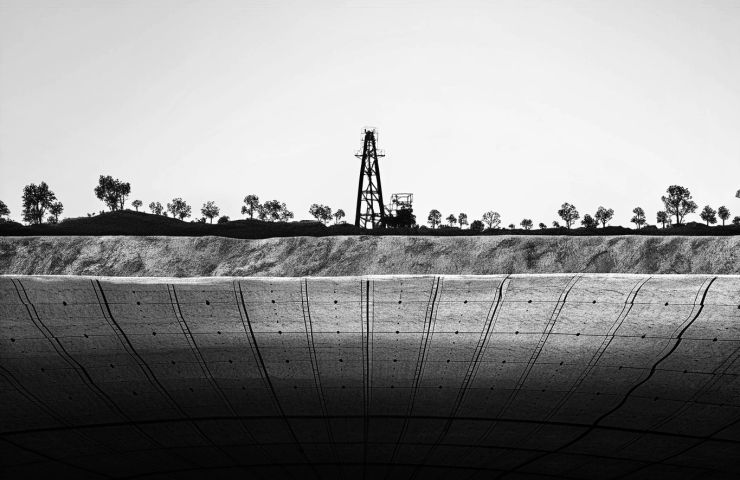
Hydrogen Production Breakthrough: Whitebark’s Rickerscote Certified for 1.2 Billion kg & 209 Bcf Helium
August 18, 2025Strap in: Whitebark Energy Limited just stunned doubters with a “world-class” discovery—1.2 billion kg of natural hydrogen plus 209 Bcf of helium at the remote Officer Basin’s Rickerscote Prospect. And the best part? Sproule ERCE, the heavyweight in independent resource checks, gave it their seal of approval.
Core News Summary
Back on August 14, 2025, Whitebark Energy (ASX: WBE) spilled the beans: Sproule ERCE has independently size-checked Rickerscote’s 3U prospective resources at a massive 1.2 billion kg of hydrogen and 209 Bcf of helium. That boils down to roughly 851 million kg H₂ and 140 Bcf He for Whitebark’s 67% slice, with room to snag the rest and hit 100% ownership in PEL 253 and 81. It’s not just fresh data—vintage wells drilled decades ago flagged both gases in fluid samples. Fast-forward to today, and slick 2D/3D seismic work reveals a sub-salt trap covering 200 km², setting the stage for a late-2025 appraisal campaign. They’re gearing up with directional drilling, downhole pressure gauges, and flow tests to turn those resource numbers into deliverability curves.
What It Means
This has the makings of a total game-changer for hydrogen production. Geological hydrogen skips the need for massive electrolysis plants and smooths out the fits and starts of renewables, delivering a reliable baseload. Add in helium—rarer than you’d think—and you’ve got a one-two punch of strategic commodities side by side. For investors, it’s a sweet double play; for governments, a diversification move beyond LNG and minerals; for industry, a pathway to cleaner feedstocks. Bottom line: tapping geological hydrogen could push costs so low, it might edge out grey and blue hydrogen without splashing out on big CCS bills.
Historical Context
Believe it or not, the Officer Basin has been flying under the radar since the 1970s. Back then, explorers shot seismic lines and drilled a handful of wells chasing oil, only to strike out or pick up tiny gas shows. Interest fizzled—until natural hydrogen stepped into the limelight worldwide. From the late 2010s, European labs and North American utilities started funding low-emission geology studies, and suddenly those salt-capped layers in Australia weren’t roadblocks but perfect traps for hydrogen brewed over eons via water–rock chemistry, offering a ready-made hydrogen storage solution.
Technical Dive: Subsalt Traps & Electrochemical Separation
Peeking beneath more than 300 meters of halite isn’t a cakewalk. Whitebark Energy used high-resolution seismic imaging—tomography and amplitude-vs-offset analysis—to pick out gas-filled sands from water zones. The subsalt closure lit up with flat spots and bright spots suggesting gas columns up to 150 m thick. With hydrogen streaming from water–rock reactions and helium seeping from granite decay, you’re looking at mixed-gas columns of serious scale. But spotting it is just step one; separating the H₂ from He is the real trick. Enter Siqens’ membrane electrochemical cell: at CSIRO’s demo plant in Victoria, mixed gas flows through a solid polymer electrolyte, protons hop across an electrode, and voilà—high-purity hydrogen on the other side. If you’re planning any real-world hydrogen infrastructure, this tech could be a total game-changer.
Collateral Impacts & Risks
Of course, it’s not all sunshine and roses. Scoring social license means teaming up with traditional owners—Whitebark’s already opened those lines of communication, but it’s early days. On the environmental front, tapping geological hydrogen nudges aquifer pressure, and exactly how that mingles with groundwater still needs a deeper dive. Coupled with stringent emissions reporting and tight water-disposal rules in South Australia, they’ve got a regulatory obstacle course to navigate. Still, if they tick every box, the upside is huge: local jobs, infrastructure that primes Sydney and beyond for broader sustainable energy goals, and a ripple effect of supply-chain spin-offs.
Strategic Angle
We’re in an era where sustainable energy and zero-emission technology aren’t just buzzwords—they’re non-negotiable. Germany, Japan, and South Korea are lining up for hydrogen imports, and Europe’s recent helium pinch laid bare supply vulnerabilities. Australia already has a clean hydrogen strategy and sprawling LNG export terminals, giving Whitebark a head start. If Rickerscote scales up, picture dedicated hydrogen pipelines, on-site helium fractionation plants, and ammonia off-takers knocking on South Australia’s door. Toss in Asia’s appetite for long-term offtake deals, and you’re looking at a potential rewrite of the export playbook.
Company & Tech Context
Whitebark Energy isn’t just chasing a one-hit wonder. They’ve got interests in Canada’s Wizard Lake oil and gas field and a mix of exploration licences across Canada and Australia. Bringing Sproule ERCE on board means the market can’t cry foul over resource claims. And with the Siqens/CSIRO electrochemical unit moving out of the lab, there’s a credible route from wellhead to high-purity hydrogen cylinders and helium vials—no sci-fi needed.
The Maverick Take
Full disclosure: I tend to raise an eyebrow at “world-class” claims, but Rickerscote feels genuine. At 67%, Whitebark’s share—851 million kg of H₂—could fuel a mid-sized ammonia plant for 20 years, while 140 Bcf of helium would keep medical imaging humming for ages. Sure, there’s hefty capex, pipeline builds, and regulatory hoops to clear, but if you’re hunting for a low-carbon jackpot underground, this one’s a standout.
Closing Insight: The real action kicks off when those drill bits hit the sweet spot and hydrogen starts flowing. If Rickerscote lives up to expectations, it won’t just shift Australia’s export landscape—it’ll prove that geological hydrogen is no longer a novelty, but the next frontier in the energy industry.



 With over 15 years of reporting hydrogen news, we are your premier source for the latest updates and insights in hydrogen and renewable energy.
With over 15 years of reporting hydrogen news, we are your premier source for the latest updates and insights in hydrogen and renewable energy.